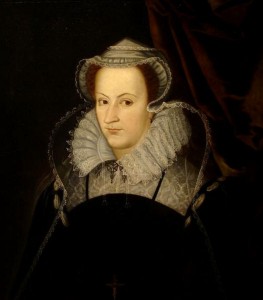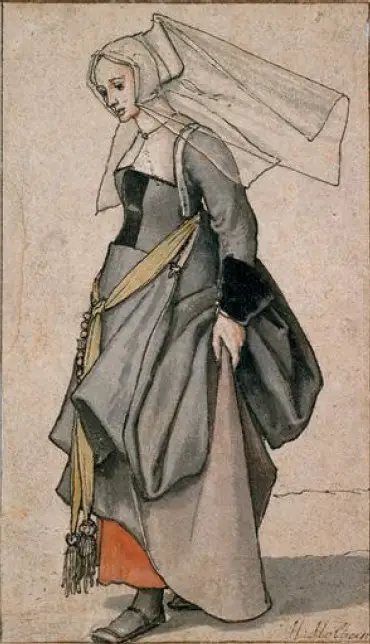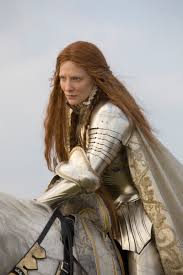 On 20th June 1567, a few days after Scottish rebels apprehended Mary, Queen of Scots, servants of James Douglas, 4th Earl of Morton, allegedly found a silver casket of eight letters, two marriage contracts (which apparently proved that Mary had agreed to marry Bothwell before his divorce) and twelve sonnets. The casket was found in the possession of James Hepburn, 4th Earl of Bothwell and third husband of Mary, Queen of Scots.
On 20th June 1567, a few days after Scottish rebels apprehended Mary, Queen of Scots, servants of James Douglas, 4th Earl of Morton, allegedly found a silver casket of eight letters, two marriage contracts (which apparently proved that Mary had agreed to marry Bothwell before his divorce) and twelve sonnets. The casket was found in the possession of James Hepburn, 4th Earl of Bothwell and third husband of Mary, Queen of Scots.
What was important about these letters?
Well, the eight letters found in the casket were allegedly written by Mary to Bothwell and one was said to implicate the couple in the murder of Mary's second husband, Henry Stuart, Lord Darnley, in February 1567. Elizabeth I ordered a commission to investigate the matter of Mary's involvement in Darnley's murder and on the 14th December 1568 the letters were produced at the Royal Commission as proof against Mary.
In his excellent book on Mary Queen of Scots, My Heart is My Own, historian John Guy writes:
"The sole evidence that she was a part to the murder plot comes from them [the Casket Letters]. There is no other proof. Her guilt or innocence depends on whether the letters are true or false."1
The Casket Letters no longer exist, so cannot be examined today, but we still have the transcripts and translations, complete with William Cecil's notes. It is these notes which Guy says give us a "glimpse" into Cecil's thoughts as he read letters that were "dynamite" in that if they were indeed genuine then "an anointed Queen could justifiably be deposed from her throne, Elizabeth's 'safety' would be guaranteed, and the threat of an international Guise conspiracy ended for ever"2. However, if they were forgeries then Mary would have to be released because it could not be proved that she was complicit in Darnley's murder.
The Sonnets
John Guy writes of how the sonnets found in the casket "were said to be Mary's own reflections on her adultery"3 with Bothwell and proof "that her consuming passion for Bothwell gave her a powerful motive for murder."4 However, Guy points out that they are highly unlikely to be genuine as "they are extremely clumsy and would pass only with the greatest difficulty as the work of a native French speaker"5 and they do not fit with the "genre of courtly love poetry"6 with which Mary was familiar. He also points out that they can be read as religious poetry.
The Marriage Contracts
One of the marriage contracts from the silver casket was said to be dated 5th April 1567 "at Seton", so over a month before Mary and Bothwell's marriage, but Guy points out that this is a "blatant forgery" because the wording of the contract included "extracts from the Ainslie's Tavern bond"7, a document which was produced after the gathering of the Lords at Ainslie's Tavern on the 19th April 1567. The other contract Guy describes as "innocuous" because "it is less a 'contract' than a written promise by Mary to marry Bothwell"8.
The Casket Letters
Letters 1 and 2, "the short Glasgow Letter" and "the long Glasgow letter" were the most damning and the second letter, if genuine, was proof that Mary was Bothwell's lover before their marriage and that she had been involved in Darnley's murder. Letter 2 contained "seemingly graphic allusions to the murder plot... interspersed with its author's protestations of longing and desire for her lover"9 and Guy explains that the case against Mary rested on seven key extracts from the letter. You can read Guy's full thoughts on the letter in "The Casket Letters" chapters of his book, but he argues that only the fifth extract, which said "Think also if you will not find some invention more secret by physick, for he is to take physick at Craigmillar and the baths also. And shall not come forth of a long time"10, can be connected to a murder plot. Guy explains that this extract was meant to prove that Mary wanted Darnley to be poisoned while he was at Craigmillar, but it is not evidence of the plot which actually killed Darnley at Kirk o'Field. Also, Guy argues that "it has to be regarded as a later forged interpolation"11 because it was missed in the material that was sent by George Buchanan to William Cecil in June 1568 and only used in the final accusations laid against Mary by the Confederate Lords to prove that Darnley's illness, which was in fact syphilis, was caused by poisoning. This charge does not make sense though as Darnley was already ill at this time.
After examination of the transcripts and translations, Guy concludes that, "in the absence of the original handwritten pages" of Letter 2, "around 1500-1800 words are likely to be genuine" and that 1000-1200 words are "likely to interpolations"12 from later letters or forgeries. It could well be that "old and new pages were spliced together to make up a composite document"13 to convince Cecil and Elizabeth of Mary's guilt.
The controversy and debate over these letters still continues today and I would recommend John Guy's book "My Heart is My Own: The Life of Mary Queen of Scots" to anyone interested in The Casket Letters or Mary, Queen of Scots in general.
(Originally published on The Elizabeth Files).
Notes and Sources
- My Heart is My Own: The Life of Mary Queen of Scots, John Guy, p396
- Ibid., p398
- Ibid., p399
- Ibid.
- Ibid.
- Ibid.
- Ibid., p400
- Ibid.
- Ibid., p404
- Ibid., p413
- Ibid., p415
- Ibid., p416
- Ibid., p417



It’s such a shame that these letters no longer exist. Still it does give my vivid imagination free rein to write some very suggestable letters.
8 Letters?…..You certainly like giving me a challenge don’t you Claire? LOL..
The original copies of the letters do not exist, but you can find the translated text of them.
To find them go to
http://babel.hathitrust.org/cgi/pt?id=mdp.39015011711507;view=1up;seq=160
or
https://archive.org/stream/casketlettersmar00henduoft/casketlettersmar00henduoft_djvu.txt
I recommend the first one.
I don’t think historian John Guy realizes that, in law (at least), circumstantial evidence is as valid as direct evidence — so his idea that proving the Casket Letters are fake means that there is no evidence that Mary was involved in Darnley’s murder is simply wrong. There is a very strong circumstantial case against Mary — motive; luring him away from Glasgow where he was safe to Edinburgh where he could be killed; not posting guards at the house where Darnley was staying; etc. — all of which are completely independent of the validity of the Casket letters. There have been cases where prosecutors have faked evidence to make a case stronger than it would otherwise be.
Hi Esther, I’m a student and im doing a history task on wether the casket letters were really penned by Mary Staurt or were they the fabrication of the enemies determined to tear down her rule and even have her killed. I love your voice and could please use some help arguing my case. Would you be open to helping me out.
Did all of that apply at that time in history, such as the use of circumstantial evidence in law? I don’t know myself, but the circumstances of not being in Glasgow and being without guards seems to indicate some kind of plot of deliberately putting Darnley in danger of being killed.
Don’t know about the rules back then; I would think there was at least an “unofficial” preference for direct evidence because that would create a motive to forge the letters, even if the circumstantial case indicates her guilt (especially since Queen Elizabeth would want something really strong). However, for a modern person, such as John Guy to say that, absent the Casket Letters, there is “no evidence” of Mary’s guilt or that the Casket letters are the “only evidence” is simply incorrect.
Courts relied more heavily on circumstantial evidence than they do today. For example, witches were routinely executed over it. Although the witch craze really came a little bit later, the standards of justice were just as poor earlier; worse, if anything.
Hi Esther, I’m a student and im doing a history task on wether the casket letters were really penned by Mary Staurt or were they the fabrication of the enemies determined to tear down her rule and even have her killed. I love your voice and could please use some help arguing my case. Would you be open to helping me out.
The Casket Letters were fake, invented to attempt to prove Mary as a killer and wh*re. She was later cleared of Darnleys murder and Bothwell raped her.
Unlikely that even Bothwell would risk raping the queen. I would not have blamed Mary for murdering Darnley, however. Mary and Bothwell had the perfect motive for Darnley, and Mary had the means. She was desperate by then, and he was a thug. I don’t think anyone seriously considered them to be innocent.
I keep waiting for someone to refer to what is, for me, the most significant fact about Darnley’s murder — and nobody ever does. To wit: Darnley, through his participation in the Riccio murder plot, had already committed two capital offenses (unprovoked murder, and high treason, in that he not only knowingly endangered an anointed monarch’s life, but connived at holding her prisoner). Given his title (however empty of actual substance it may have been) of “king of Scotland”, it would have been impossible, according to 16th-century law, for him to be brought before any regular court and tried for these crimes. Therefore, even if Mary DID connive at his murder, Darnley’s death at Kirk o’ Field could plausibly be defined as an execution, not a homicide. (Elizabeth faced a comparable legal quandary twenty years later when she executed Mary; she did not address the relevant legal issues, but simply ignored them).
Extrajudicial killings, however they might be justified, are illegal. Don’t try it at home.
Well, the eight letters found in the casket were allegedly written by Mary to Bothwell and one was said to implicate the couple in the murder of Mary’s second husband, Henry Stuart, Lord Darnley, in February 1567. Elizabeth I ordered a commission to investigate the matter of Mary’s involvement in Darnley’s murder and on the 14th December 1568 the letters were produced at the Royal Commission as proof against Mary.
Darnley’s death at Kirk o’ fields is one of the unsolved mysteries of Scottish history.
The house was blown up, but Darnley’s strangled corpse was found in the garden.
Queen Mary, who was living apart from Darnley at the time, quite understandably as he was suffering from syphillis, had visited him in the afternoon before the explosion, and was said to have intended sleeping there that night.
However, she changed her mind and returned to Holyrood House.
Whether she knew that an attempt on Darnley’s life would be made or not, no-one has ever been able to decide.
It was the talk of Edinburgh at the time that she did know and nobody seems to have seriously doubted her complicity either then or at her trail in England.
Does anybody know what happened to the casket letters?
The Casket Letters could well have been forged by “writing master” Clement Perret, of the Low Countries (Brussels) but at that time living in London with his father Steven Perret, an untrustworthy person, who knew how to gain access to royal courts for his own financial benefits, like the Brussels court and the French court. Together with engraver Cornelis de Hooghe, in 1569 Clement Perret made a lavish witing example book “The Excercitatio” with over 30 different examples of various handwritings. The copper plates in which the examples were engraved were stolen from Captain De Marchi, the principal aide and also lover of Margareth of Parma, gouvernor of the Low Countries. One copy of this example book was given to Queen Elisabeth I, bound in leather with her coat of arms imprinted in gold on the cover, which still exists. Cornelis de Hooghe claimed to be an illegitimate child of empreror Charles V, and thus a half brother of Spanish King Philip II, which made De Hooghe a relative of Queen Elisabeth, since Philip II had been married to her halfsister, Mary Tudor (aka Bloody Mary). De Hooghe’s claim is probably true, since he engraved several maps for Margareth of Parma, Philip II’s halfsister and (if the claim was to be correct) also De Hooghe’s halfsister. De Hooghe was executed after his plot in order to bring Philip II back on the Dutch throne, was hatched in 1583. So he died for his halfbrother, the Spanish King. But earlier, in 1567, Perret and De Hooghe were known as the world’s greatest masters of handwriting. Not only Perret was in London at the time the Casket Letters were found, De Hooghe was there too, as a religious fugitive from Antwerp. In May 1567 he received a privilegde for “secret sciences” by the queen, together with another religious fugitive from Antwerp, Lucas de Hailly, a leading iconoclast who had demolished several Flemish churches and other catholic buildings and places before fleeing to London. Writing master Perret received a yearly gift of a 100 crowns by the queen. Some suppose that this was for teaching her the italinate way of writing, but that can’t be true, since her majesty already had learned how to write this way by “scolemaster Roger Ascham”. Later, in 1574, De Hooghe made the very first map (of Norfolk) of the very first English Atlas, also known as the “Elisabeth Atlas”. On the contrary, Clemens Perret vanished into thin air soon after the Casket Letters Affair.
I go with John Guy’s theory that the love letters were genuine but that they were written by Mary to Darnley and then shuffled around and bits added, which explains the strange jumps between pages. That makes much more sense. His chapters on the letters in his biography of Mary are excellent.